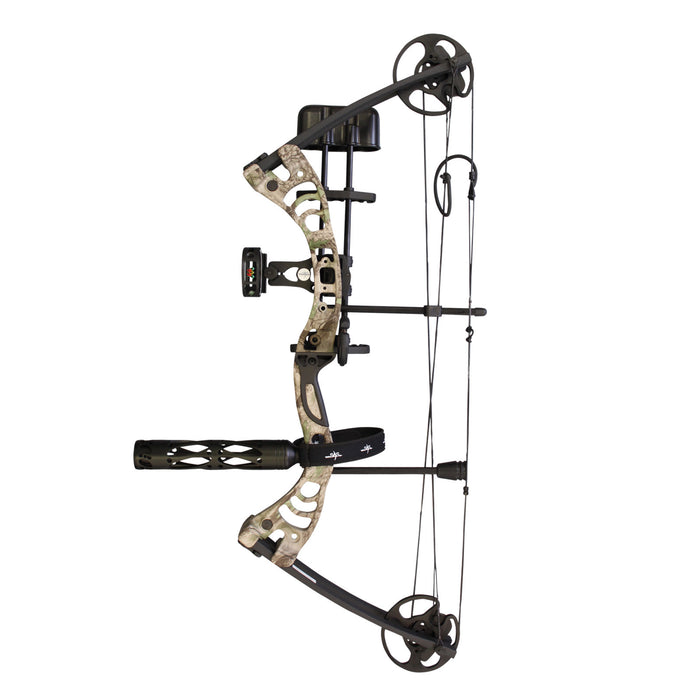Maximizing Your Archery Performance With the Right Compound Bow Stabilizer: an Extensive Summary
In the realm of precision, archery and consistency are paramount to achieving ideal performance. One often-overlooked yet important part in boosting precision is the compound bow stabilizer. This unassuming gadget plays a considerable function in steadying your purpose, minimizing bow torque, and soaking up resonances. Nevertheless, the efficiency of a stabilizer hinges on different elements, including weight, positioning, and style. By understanding the nuances of selecting and optimizing a substance bow stabilizer, archers can adjust their tools to elevate their capturing experience to new levels of efficiency and control.
Relevance of Bow Stabilizers in Archery

Furthermore, bow stabilizers aid in stabilizing the weight circulation of the bow, which can enhance the archer's security while firing and aiming. By including weight to the front of the bow, stabilizers can reduce the quantity of torque experienced upon launch, causing a smoother and extra controlled shot - compound bow stabilizer. This weight circulation also helps in holding the bow constant for a longer period, enabling the archer to intend more properly
Sorts Of Compound Bow Stabilizers
When considering the various types of compound bow stabilizers available, it is vital to comprehend their distinctive features and features to establish the most appropriate choice for maximizing archery efficiency. The most typical types of compound bow stabilizers consist of sidebar stabilizers, front stabilizers, and back stabilizers. Back stabilizers, likewise called rear stabilizers, are mounted to the back of the bow and aid in counteracting the weight of other accessories, resulting in improved stability and constant intending.
Elements to Consider When Selecting
In reviewing substance bow stabilizers, comprehending the distinctive functions and features of each type is crucial for making a notified decision on one of the most suitable alternative to enhance archery efficiency. When choosing a stabilizer, one should consider the weight of the stabilizer itself. While a heavier stabilizer can provide even more security by minimizing the bow's activity, it might also cause tiredness during lengthy shooting sessions. Equilibrium is another essential element to consider. The stabilizer's size and design significantly affect the bow's equilibrium, check out here influencing the shooter's ability to hold consistent aim. Additionally, the material of the stabilizer can influence its efficiency. Carbon fiber stabilizers are light-weight and soak up vibrations well, improving accuracy. The number and adjustability of dampeners on the stabilizer can adjust its performance by decreasing sound and shock upon launch. By carefully assessing these elements, archers can select a substance bow stabilizer that straightens with their shooting design and optimizes their overall performance on the archery variety.
Setup and Adjustment Tips
For optimal performance and accuracy in archery, mastering the installment and change of your bow stabilizer is crucial. Correct setup begins with connecting the stabilizer to the bow's riser, pop over to this site ensuring it is firmly secured. Most stabilizers come with installing equipment for very easy installation, but it's vital to comply with the producer's standards for the certain design you have. Once attached, readjusting the stabilizer includes finding the appropriate equilibrium between weight distribution and length. Trying out various mixes till you accomplish the desired feeling and stability.
When adjusting the stabilizer, start with little step-by-step changes instead than radical modifications. Pay attention to exactly how the bow reacts to changes in stabilizer setups and make adjustments accordingly. Consistently inspect the stabilizer's tightness and general problem to guarantee it proceeds to work optimally.
Maintenance and Care Guidelines

When not in use,It is also essential to store your bow with the stabilizer in a secure and secure area. compound bow stabilizer. Stay clear of leaving it in severe temperature levels or subjected to guide sunlight for extensive durations, as this could cause damages to the stabilizer. Occasionally inspect the stabilizer's positioning to ensure it is still appropriately positioned on your bow. Following these upkeep and treatment guidelines will certainly help you obtain the most out of your bow stabilizer and enhance your total archery efficiency.
Final Thought
Finally, picking the best compound bow stabilizer is critical for making the most of archery efficiency. Comprehending the importance, kinds, aspects to consider, installment and adjustment ideas, as well as maintenance and care standards can substantially affect one's accuracy and consistency in shooting. By choosing a stabilizer that suits private demands and choices, archers can boost their overall efficiency and attain much better results on the array or in competition.
Bow stabilizers play a crucial function in improving an archer's accuracy and uniformity by lowering resonances and stabilizing the bow during the launch of an arrow - compound bow stabilizer.Furthermore, bow stabilizers assist i was reading this in stabilizing the weight distribution of the bow, which can enhance the archer's stability while shooting and aiming. The most usual kinds of compound bow stabilizers consist of sidebar stabilizers, front stabilizers, and back stabilizers. Back stabilizers, additionally called rear stabilizers, are placed to the back of the bow and help in reversing the weight of other devices, resulting in improved security and constant aiming. When selecting a stabilizer, one must take into consideration the weight of the stabilizer itself